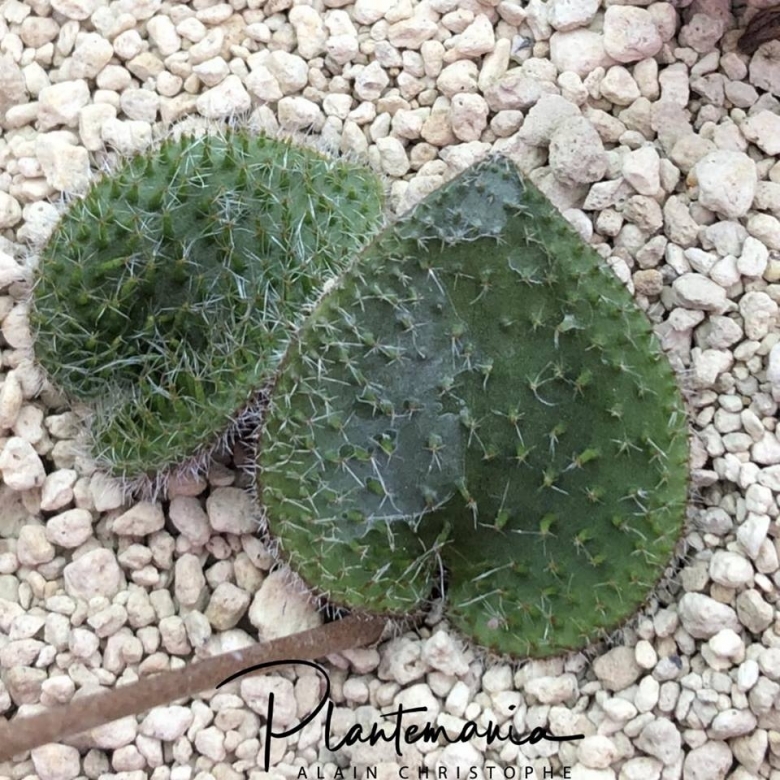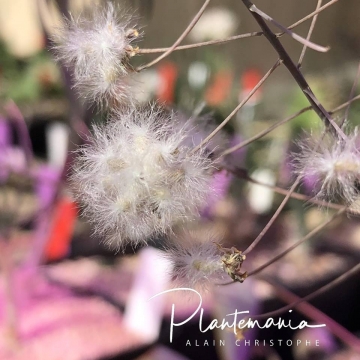
Eriospermum erinum Photo by: © Plantemania
Origin and Habitat: Nieuwoudtville district, Northern Cape, South Africa (Extent of occurrence 800 km²).
Habitat and Ecology: Nieuwoudtville-Roggeveld Dolerite Renosterveld, Nieuwoudtville Shale Renosterveld. Eriospermum erinumSN|35447]]SN|35447]] grows in the dwarf karoo shrubland on hill slopes (in soils derived from the dolerite outcrops), and on flats (in clay soils derived from Dwyka tillite).
This species experienced a past loss of habitat to wheat farming (over 73% of its habitat was transformed in the past 60 years). Eriospermums are long-lived species (generation time is a minimum of 30 years), so this loss has taken place in less than three generations. Eriospermums are long-lived (generation length is suspected to be a minimum of 30 years).
Synonyms:
Description: Eriospermum erinumSN|35447]]SN|35447]] is an unusual tuberous, geophyte plant with a small spherical tuber, that produces a solitary heart-shaped, prostrate leaf (3.5 by 2 cm wide). It produces a long flower spike, with small flowers and once the flowers die, the single leaf appears, and it’s quite an intriguing leaf when viewed in close up, with the upper leaf surface scattered in pointed structures (a.k.a. enations) tipped with small tuft of white hyaline hairs. This peculisr leaf-shape make this a very distinctive species.
Tuber: Pear-shaped, up to 30 mm long and 20 mm at the widest, skin light brown, flesh white, growing point basal. Old leaf sheaths 30 mm long, 2,5 mm diameter, membranous, brown.
Leaf: Solitary, hysteranthous (produced after the flowers) sub-erect; contemporary leaf sheath up to 5 mm above ground, whitish; lamina broadly ovate to orbicular-cordate, 25 mm long, 25 mm wide, lover surface dark red, upper surface dark green with numerous short, straight, cylindrical green enations approximately 1 mm high, the apex of each bearing a tuft of transparent hairs; margin with scattered transparent hairs. Leafing time winter (April-October).
Inflorescence: Peduncle 120-180 mm long, 1 mm diameter with red striations. Raceme lax, 20-90 mm long, 50 mm wide, 3-20 flowered with triangular bracts1 mm long. Pedicels 14-30 mm long.
Flowers: Whitish, with an olive-green mid-nerve with fine red striations. In flower it is not as readily separated from other members of the group with dimorphic tepals and filaments. anthers green or deep purple. Style cylindrical 1,5 mm long, white. Autumn-flowering (February-April)
Fruits (capsule): 3-lobed, up to 6 mm long, 4 mm wide.
Bibliography: Major references and further lectures
1) P.L. Perry, “Ten more new species of Eriospermum (Eriospermaceae/Liliaceae) from the western Cape” S. Afr. J. Bot., 55(1): 83-102, 1989
2) Goldblatt, P. and Manning, J.C. 2000. “Cape Plants: A conspectus of the Cape Flora of South Africa”. Strelitzia 9. National Botanical Institute, Cape Town.
3) Hilton-Taylor, C. 1996. “Red data list of southern African plants”. Strelitzia 4. South African National Botanical Institute, Pretoria.
4) Perry, P.L. 1994. “A revision of the genus Eriospermum (Eriospermaceae)” Contributions from the Bolus Herbarium 17:1-320.
5) Raimondo, D., von Staden, L., Foden, W., Victor, J.E., Helme, N.A., Turner, R.C., Kamundi, D.A. and Manyama, P.A. 2009. “Red List of South African Plants”. Strelitzia 25. South African National Biodiversity Institute, Pretoria.
6) Raimondo, D., Todd, S. & Marinus, E. 2007. “Eriospermum erinum” P.L.Perry. National Assessment: Red List of South African Plants version 2017.1. Accessed on 2018/10/28
7) Tom Radford, “Eriospermum erinum” in: BCSS Southampton & District Branch February 2016 Newsletter, page 5
 Eriospermum erinum. Seeds. Photo by: © Plantemania
Eriospermum erinum. Seeds. Photo by: © PlantemaniaSend a photo of this plant.The gallery now contains thousands of pictures, however it is possible to do even more. We are, of course, seeking photos of species not yet shown in the gallery but not only that, we are also looking for better pictures than those already present.
Read More...











